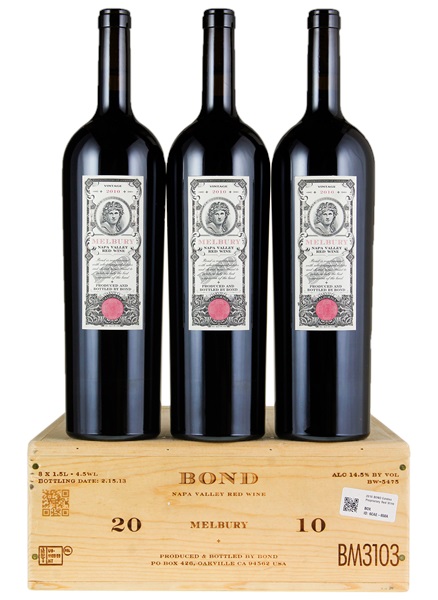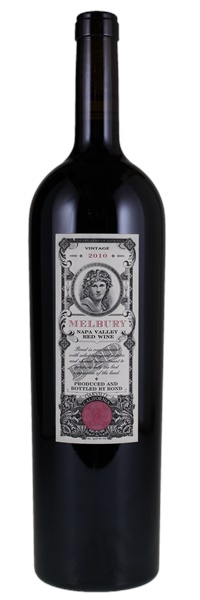
Image above is an example. To view the image of the lot, click the item number.
Estimate

...aromas of blueberry liqueur, black currants, charcoal and spring flowers. It possesses gorgeous purity and remarkable incremental richness, but it is quite brooding and backward...
The 2010 Melbury is rich, explosive and just as captivating as it was from barrel. Dark red cherry, plum, mocha, sweet spices and leather explode from the glass in a rich full-bodied wine loaded with intensity, class and pedigree.
...deep, ripe scents of black plum, kirsch, black raspberry liqueur and smoked meat lifted by violet and rose petal notes. Wonderfully fine-grained, ripe and deep; an incredibly plush, broad, elegant wine with lovely energy and breadth to its dark berry, spice and mineral flavors. Impeccably balanced Cabernet with melting caramel tannins that fade into the wine's intense dark fruit flavors on the palate-staining, extremely long finish.
Offers a dense tannic backbone, making this a well-built, firm and structured infant that shows both depth and restraint, gaining richness and dimension on the finish.